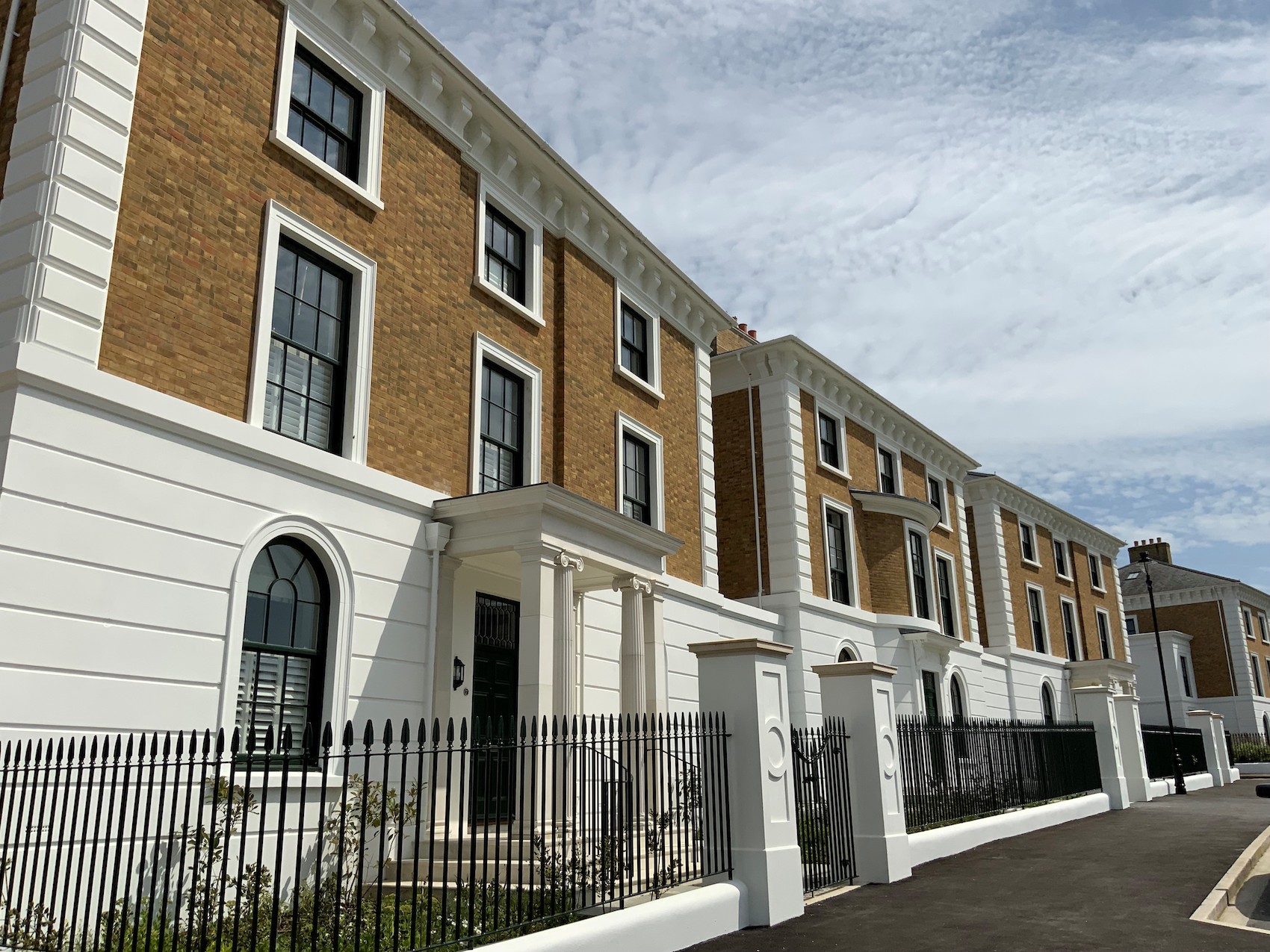To prevent radon seeping into a building, gas-proof protection covering the entire footprint at ground level is established, protecting from outer-skin face to outer-skin face. This usually takes the form of a gas-grade membrane protecting the oversite, that interfaces with radon barriers that travel through the inner skin, transversing the cavity, and projecting through the outer skin at a lower level. This configuration prevents the gas continuing its upward journey, while airbricks located under barrier level in the exterior walls ensure the trapped gas can evacuate the structure.
But there is a problem. The construction design, internal floor levels and external ground levels dictate the actual DPC and barrier positions and those positions give rise to a regularly reoccurring failing. Wherever there is an external door opening in the exterior wall, there is a necessity to unite membrane level with barrier level, and at the same time extend that protection to below sill level (of the exterior doorway), while ensuring all cavity closers to the reveals of that doorway are likewise integrated, so protection is continuous. Addressing the reveals is the point where failings arise.
Complementing the radon barrier range from Cavity Trays, is the Type PAT Protective Adjustable Threshold, a three-dimensional preformed DPC gas-grade component that is bedded within the external door opening and into its reveals prior to the frame being installed. Adjustable side connectors that attach and adjust in level provide a continuous link to the adjacent cavity barriers. Cavity closers to the opening are accommodated within the Type PAT reveal moulded recesses. Importantly, the assembly provides continuity of gas protection around and under the external opening. An integral drainage facility provides an escape route should water seep within the under-threshold sealed area.
Watch the three-minute Type PAT demonstration:
Should ground levels prevent straight-through gas evacuation via Cavibricks, the gas can be evacuated above barrier level (and thus ground level) by incorporating cranked vertical sleeves with integral cloaks that lap and seal to the Radon barrier.
Source: Architecture Today




